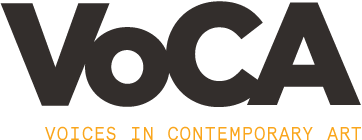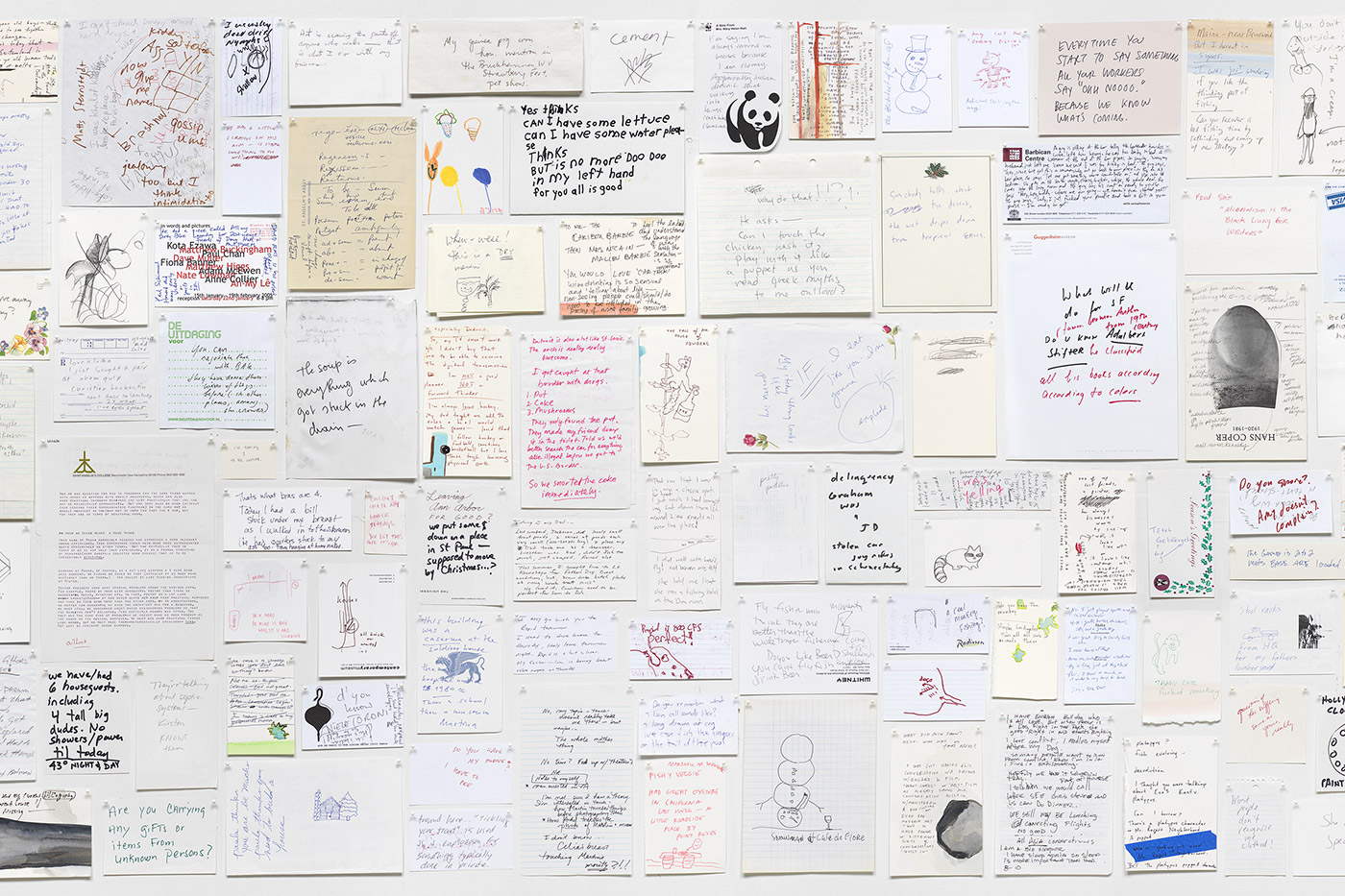Inventory of Apologies
Over the course of 2020, the COVID-19 pandemic forced many arts institutions to shift public programs to digital platforms—talks, round table discussions, studio visits, and video art projects. In the process of doing so, many neglected to consider that deaf people cannot access this material without captioning, and that effective captioning is a good institutional practice. It is also a mandate of the Americans with Disabilities Act (in the US) and the Disability Discrimination Act (in the UK). While different countries all have different requirements, the real issue being posed is not necessarily a legal one: it’s also a moral one. Captions are about inclusion: not just for those who are deaf, but also for those who benefit from seeing what they are hearing. If art is going to be a critical part of our social and political moment, and if diversity is to encompass the intersectional enfolding of race and disability, it needs to be accessible for everybody.
Of the fifty or so online events I attended during the pandemic, only two of them provided effective captions without asking, and without hassle. It was very frustrating to write back and forth with institutions, and get an array of excuses and apologies, and in many cases little meaningful progress. When you’re a person with a disability, you spend a lot of your lifetime advocating for access, and by extension, advocating for dignity. It does not come easily. And with so much that’s gone awry in our world right now, people often put disability-access at the bottom of their list of cares. It shouldn’t be this way. Access is a metaphor for inclusion. It’s a reflection of how institutions are not prepared to be truly inclusive—how they created this morass themselves—and how disability initiatives as an institutional mandate is being pushed aside to favor other priorities.
As institutions address their own history of racial exclusion, patriarchal administration, sketchy provenance of collections, Western-centric typologies, and so on, ensuring access to linguistic information is one way of ensuring this effort has a measurable outcome. Captioning done after-the-fact does not allow deaf people to participate in real time—which is a separate-but-equal kind of situation. I am often told: “We’re sorry we didn’t caption the presentation, we will have captions on the archived video, please check back in with us in one or two weeks.” This is deeply offensive, the kind of differential treatment that Brown v. Board of Education was meant to eliminate over fifty years ago. Only with real-time captioning can deaf people truly participate in an event, and ask questions like others. Access is not a one-way process: if it allows disabled people access to the event, it also allows others access to people with disabilities, so they can add to the conversations taking place.
Below is a list of apologies I have received over the past several months. I have removed the names of the individuals and institutions. They include large and small cultural institutions, both public and private, all of whom were, based on their replies, quite aware of their obligations. A fair number of institutions did not reply to concerns about disability-related access, but they are another story, and another essay, for another day.
Apologies Inventory
*************************************************************************
Joseph–our apologies, as it’s a live event and we don’t have closed caption capabilities.
Unfortunately no captions for this program. But we hope so soon for a future event!
I apologize that this happened today and I will ensure this does not happen again. I hope you can join us for the next talk.
Unfortunately this session is not being captioned… I apologize for any difficulty this may cause.
Unfortunately, no captioning has been organized for today’s panel.
It is a real shame that we could not figure out the technology to have the captioning stream from Zoom to Youtube on this new platform we worked on with the developers, though we tried through many tests and it seems not to be working consistently.
I am sorry we did not (and found ourselves unable to) provide closed captioning from the get-go. It was a serious oversight on our behalf and I wish we had been better.
Unfortunately, our Zoom plan does not allow for closed captioning and transcriptions of webinars. I also spoke with Zoom, who confirmed that was not a feature our plan supported. I have told them that they should include accessibility options for every account by default, and they said they would pass along that feedback to their team. I apologize that it does not provide a solution for us currently.
I flagged this for our ITS department… I am hoping the solution is up and available moving forward. The events on Thursday and Friday are also in English and our hope is to have this solved by then.
On behalf of our entire team producing today’s Dialogues program, I apologize greatly for the lack of closed caption. That was not our intention, and I can assure you the recorded video, which will be available by next week, will have the closed caption. I will personally email you a copy of that link as soon as it is available. I am grateful that you reached out to us so quickly and I can assure you we will correct that issue.
Unfortunately, our digital Festival is not fully accessible. It will be broadcasted on youtube where you can find automated subtitles. We are aware that this is not sufficient in making the program fully inclusive and we will work on improving that aspect.
We recognize that we fell well short of our goal in this instance and that we need to do better. ADA compliance is something we take seriously, and although we have yet to schedule any more online events, I can assure you that our next one will be compliant.
Sorry all, that was really insensitive of me to post without captions previously please forgive.
I’m truly sorry. I will ask them to make sure the recording is captioned, though I know that’s no substitute for watching it as [it is] happening.
I completely understand the need for this and apologize we did not figure this out earlier.
We appreciate your feedback and are sorry for any accessibility challenges you or others have experienced.
We sincerely apologize for falling short on inclusivity in our digital programs and we are working to correct this as soon as possible.
I assure you we are on fixing this permanently given our new normal, but I am so sorry that we had to hear this from you / the frustration that it caused.
We apologize for the delay in getting back to you. This is an on-going process, but all of our new videos will be captioned. We are also working to ensure our past videos will be captioned as well.
These are first steps and we know that they are not 100% sufficient in making the program fully inclusive. But we hope that they will help to make our events more accessible for people who cannot hear and, as we continue to improve our work, will be the start of a number of improvements.
We’re working a little slower at the moment owing to rotating furloughs across all of the teams, but I have received news that there are several plans in place with respect to captioning and accessibility as a whole, afoot.
I heard they looked into it and confirmed it wasn’t happening. I made a suggestion that all videos are captioned. Hopefully we can make a change in the future. So sorry.
I was involved with planning the event and because of my own ability privilege it did not occur to me that having a transcript after the event is not sufficient… I have been part of many programs at other institutions that offer live captioning so I know it is very doable. Thank you for sharing this with me and I’m sorry for the lack of care….
I do apologize for any inconvenience this has caused. I have escalated this issue to our help desk team, a ticket was created to have captions placed for the video.
I apologize about the captioning. It’s up and running now.
I’m sorry for the delayed reply. The office has been very busy due to finals and wrapping up the semester with last minute duties. Unfortunately, video captioning all the videos will most likely not be dealt with until next semester. We want to give it the proper time it demands and therefore I’m sorry to inform you that we will not be able to meet your requests.
In fact, we very much regret that we are currently unable to realize the project in another way. It is a great concern of ours to make our programs in both the physical and digital space gradually less barrier-free and more inclusive. We should have specified the details in our announcement and apologize for this. Cultural inclusion is important to us!
We truly appreciate your message. It seems the captions in these videos were not enabled on the front end. I deeply apologize for the error and they should now appear.
We send the episode as soon as it is finalized (so last night) to our transcriber, who usually turns it around to us within two days. So the transcript will be up by tomorrow (copy edited by me, so I guarantee it!). I’m sorry it is not sooner, and I’m going to work on how to guarantee it gets up the same day as publication.
Many thanks again for raising this and no need to be gracious on your part, we are playing catch up with this and are behind on many fronts!
Again, I am sincerely sorry you had difficulty using our services. I am also sincerely sorry that our customer service team chose to argue with you instead of helping you, which is what they should have done in the first place.
Again, I apologize for this and will contact the individuals working on social media videos.
I am sorry for my ableist oversight. It was/is fucked up and I will do better.
Deeply sorry I didn’t realize [the tech people and event organizers] were that dumb which was my mistake.
Despite our plans to make closed captioning available during the livestream, we experienced a technical challenge that affected the caption functionality. We are committed to providing equitable access to our content and sincerely apologize that your experience was impacted in this way.
Apologies for the inconvenience.
Again, I apologize for our complete oversight.
We are trying to find a solution to this, Joseph.
I am deeply sorry for the experience you had at our program last week. I also want to apologize for the fact that you did not hear back from us promptly in response to your first email.
While I wish you didn’t have to, thank you, sincerely, for taking the time to explain my privilege to me. I promise we will do better.
While we are grateful to you and others for keeping us accountable, we know that the work to provide equitable access to all our audiences lies with us. We are committed to learning and doing better.
I understand that an apology will only go so far and know that you have heard many of them from the School. We nonetheless remain sincerely sorry that we failed you and other members of our community.
Joseph — we still haven’t solved it — so sorry.
*************************************************************************
Further Reading and Resources
For general information on captions and captioning, the following links are useful introductions:
https://www.w3.org/WAI/media/av/captions/#checklist
https://www.veed.io/video-accessibility/closed-vs-open-captions-vs-subtitles
Harvard’s suggestions:
https://accessibility.huit.harvard.edu/hosting-accessible-remote-meetings-and-events
For captioning providers, the following offer vetted services, though they are in no way a comprehensive list. When arranging for captioning services, it is always recommended that you consider multiple providers, and request samples and references. And, when organizing events like talks and interviews, always remember to provide access and contact information in all promotional materials.
https://www.3playmedia.com/services/captioning/
Main image
Joseph Grigely, People Are Overhearing Us (detail), 2012
Pigment print, 112 x 188cm, edition of 3
Courtesy of Air de Paris, Paris
Image description: A photograph of an artwork called “People Are Overhearing Us” by writer and artist Joseph Grigely. The artwork is comprised of a series of handwritten notes on paper, all different sizes and shapes, with different kinds of handwriting in various types of ink, pinned to a white wall to form a grid-like pattern. One note, for example, shows a drawing of a panda bear, another an upside down snowman.



